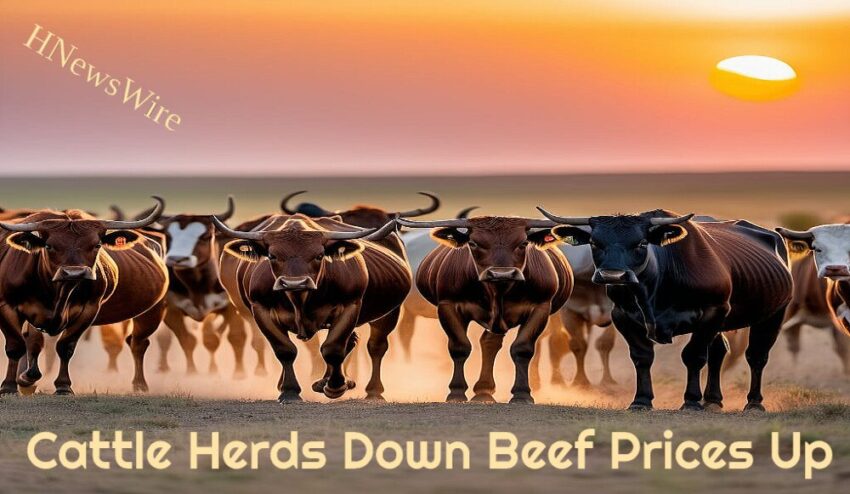BY SRH
It is nothing short of worrying that the cow herd in the United States is decreasing, and some ranchers have referred to it as a “national security threat” to the food supply chain of the nation. Despite the fact that this continues to be a major factor, cattle prices on the Chicago Mercantile Exchange and beef prices at the neighborhood supermarket are both at record highs currently. It has become increasingly difficult to maintain or rebuild herds as a result of the elevated interest rates and surging input costs that have occurred throughout the years that the Biden-Harris administration has been in power. These issues are anticipated to continue throughout the beginning of President Trump’s second term.
As a result of increased interest charges on cattle and elevated input costs since 2022, ranchers have been confronted with a multitude of macroeconomic headwinds that have made it difficult for them to maintain or replenish their herds. These headwinds have pinched margins and diminished the incentives to rebuild. Additional pressure has been placed on producers as a result of drought circumstances and “green” de growth climate regulations, both of which have contributed to the difficulty of the situation.
It was disclosed in the annual Cattle Inventory report published by the United States Department of Agriculture at the beginning of the year that the nation’s cattle supply had reached a level that had not been seen in 73 years, with a total of approximately 86.6 million head.
Within the context of the present cattle cycle, which is characterized by low inventory and high prices, there are a lot of uncertainties that remain regarding when ranchers and producers will start rebuilding the cattle herd across the country. It is possible that the industry will experience a severe supply bottleneck if additional replacement stock is not brought online in the near future. This circumstance has the potential to cause retail prices for ground beef and other beef products to drastically increase.
Not only has the herd been reduced in size, but it has also been completely eliminated. It is not a coincidence that this is the lowest this year since 1951. It is a cautionary note. Texas Slim, the founder of The Beef Initiative, argued that the land has been deprived of its guardians as a result of years of phony money, regulatory mischief, and globalist trade scams.
Slim underlined that they had lost more than simply cattle; they had also lost their legacy, their sovereignty, and a future for their children. Bringing this herd back together is much more than simply beef. To survive is the goal here. Food is the starting point for national security; it is not guns that are the starting point.
The Beef Initiative is a think tank that focuses on agriculture and pushes for a food supply chain that is more localized, redundant, and secure. This chain would provide customers in the United States with clean beef products while also empowering individual ranchers. Within the context of the current poisonous food system, which is mostly controlled by the processed food industrial complex, the objective of the think tank stands in stark contrast to the current system.
One of the most important foundations of the “Make America Healthy Again” movement, which ZeroHedge will soon be supporting, will be the establishment of direct connections between ranchers and customers. The objective of the effort is to offer Americans with clean beef, to encourage greater openness and accountability in relation to food, and to return control of the food supply chain to ranchers who run their operations on a small scale.
![]()
Click this link for the original source of this article.
Author: StevieRay Hansen
This content is courtesy of, and owned and copyrighted by, https://hnewswire.com and its author. This content is made available by use of the public RSS feed offered by the host site and is used for educational purposes only. If you are the author or represent the host site and would like this content removed now and in the future, please contact USSANews.com using the email address in the Contact page found in the website menu.





